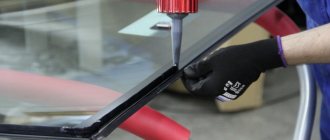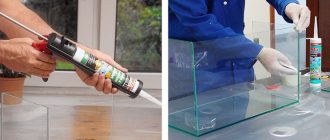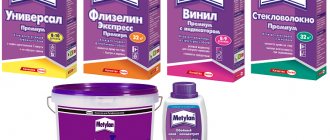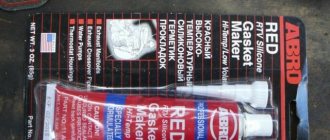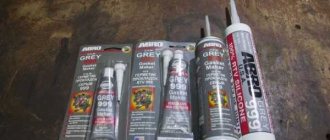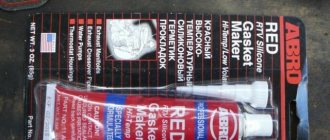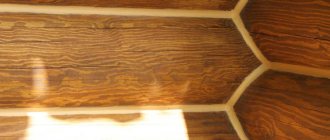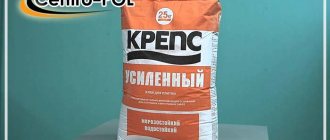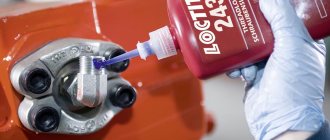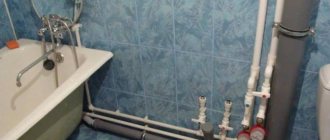To independently manufacture or repair aquariums, it is necessary to select the products that best meet the requirements stated for the operation of the fish tank. The best option is silicone transparent sealant for aquariums. It is able to fasten glass walls, securely fixing them for a long time. We will look at how to make a choice and what to focus on in this article.
Aquarium
General requirements for sealant
Glass can be sealed using many means; any reliable adhesive is suitable for this purpose. Aquarium glass is a completely different matter. Any brand of glue will not be suitable for its repair for the following reasons:
- The walls and bottom of a glass aquarium undergo high pressure, especially for products with a capacity of 300-400 liters or more. If the glue is not flexible enough, the seam will crack. The product must be able to withstand stretching without losing its tightness.
- Aggressive factors will act on the joint for a long time. In addition to the pressure of the water mass, it is also the air outside, temperature changes, and ultraviolet radiation. Not all adhesives can “tolerate” such influence for a long time.
- Sea and river fish, snails, and plants live in a glass aquarium. They are very sensitive to toxic chemical components and will quickly die. For example, taking ordinary construction sealant with bitumen additives can cause poisoning of living beings. Polyurethane glue will work similarly.
Which glue is best for repairing an aquarium or making a new one yourself? We use good sealants that meet the following requirements:
- absence of harmful substances, antibiotics, fungicides, acids, alkalis, dyes in the composition;
- reliability, the highest degree of adhesion to glass, plexiglass (depending on the material of the aquarium);
- elasticity, the ability to adapt to changing environmental conditions;
- water resistance.
Silicone sealant is best suited for an aquarium; this product is recommended by most experienced aquarists.
What silicone to use for aquarium repair
For a flawless and safe repair, choose an adhesive that is truly suitable for aquarium glass, because it must have a very strong seal, be flexible, transparent and fill cracks well.
Attention: We remind you once again that after polymerization, the glue should not release substances harmful to fish and any plants that make up the habitat. To find out if the product you choose is non-toxic, refer to the information contained on the packaging or the product data sheet.
If the glass has a very large leak, the silicone will not withstand the pressure, especially if the aquarium is large.
Types of sealants
The composition of sealants can be acrylic, silicone, thiokol, polyurethane and others. Silicone is suitable as the main component of the sealant; other options can be toxic to living organisms. You can use one-component and two-component products. The former are more convenient to use; they are used like regular glue. The latter will have to be mixed correctly, adding a certain amount of components.
If we are talking about gluing small external cracks that are not through, you can use a different type of sealant. Acrylic is not suitable here - it is very afraid of moisture and has a weak level of adhesion. There are also butyl sealants on sale: their strength is average, but they can easily repair minor defects. If the aquarium bursts, it can be cleaned of sand and stones, dried and sealed with epoxy glue or cold welding. After complete drying, such products are safe for fish and plants, but it will not be possible to seal the aquarium without draining the water.
Silicone glue
Silicone sealing mixture used for artificial ponds is briefly called aquarium silicone. The variety has gained great popularity in the aquarium hobby due to its wide range of advantages and benefits.
Before choosing how to glue a crack in a tank, you should find out about the composition of the product used. Aquarium silicone sealant has a complex and rich composition, which includes the following components:
- Rubber and dye.
- Strength multiplier.
- Vulcanizer and adhesive, which ensures strong adhesion of surfaces and drying.
- A plasticizer that gives the product elasticity.
It is important to note that silicone varieties are safe for inhabitants of the underwater world and will not cause any harm to fish, vegetation and shellfish.
Features of choice
Silicone sealants are divided into acidic and neutral. The former have a strong vinegar smell and are marked “A” on the tube. Neutral sealants have no odor; these are the ones you need to buy to repair your aquarium yourself. They cost more than acidic ones; a product cannot be too cheap. Sealants have the following properties:
- durable, elastic, moisture resistant;
- withstands changes from -70 to +70 degrees;
- do not tolerate staining - the paint literally rolls off;
- They cannot stand applying a new layer to an old one; they will have to completely clean the product and degrease the base.
When purchasing, you need to pay attention to the colorlessness of the sealant (colored options with added artificial pigments are not suitable), and to a good residual shelf life. The instructions must indicate that the product can be used to glue aquariums, which will confirm its safety.
Subtleties of use
Silicone glue cannot be painted with any paints. Therefore, when applying, you need to ensure that the sealant does not come into contact with decorative elements and the metal frame. Also, it cannot be applied in several layers. To fix the leak, you will have to completely remove the old sealant. If you apply a second layer, it will simply fall off.
Reference! The glass must be cleaned before gluing, otherwise the elements will not be able to be joined. Some aquarists prefer to get a new tank, since gluing an old one together takes a lot of time and effort. If the aquarium is new, there are no special problems.
Properties and composition of silicone sealant
Users often call this sealant “silicone”. It is widely used in everyday life and at construction sites due to its versatility. The basis that ensures strong adhesion is artificial rubber. It also contains strength enhancers, modifiers, and plasticizers. The products are sold transparent and colored, which must be taken into account when choosing. The composition also necessarily includes a vulcanizer (converts the paste into a transparent elastic material) and adhesives (increases the reliability of adhesion).
Black silicone
Black sealant is considered by many to be the strongest, strongest, does not leak and can withstand any load. In fact, its adhesion rate and curing speed are no different from other products, the aesthetic properties are simply improved. After gluing the seams, they will acquire an attractive appearance and correct geometric shapes. Black sealant will look especially beneficial on large aquariums.
Transparent silicone
The use of a transparent sealant will help to visually “unload” the structure and make it appear weightless. Unfortunately, absolutely transparent compositions can be colored under the influence of feed and medicines that are added to the water. A film of plaque will be visible on the transparent sealant, and adherent algae will be more visible. It is better to use this material in small aquariums.
Main varieties
Silicone sealant is available in 2 color options: transparent and dark.
Black
This product is considered the best option for assembling containers. Some aquarists attribute increased strength and rapid hardening to the composition. This is not true, because black differs from transparent glue only in the presence of dye. The dark color gives the seams an aesthetic appeal. The aquarium takes on clear, strict forms. Black sealant is used when assembling volumetric tanks.
Transparent
This sealant makes the container floating and weightless. However, when certain medications are added to water, the transparent seams may change color. The plaque formed by algae and fish stands out more strongly on the joints.
Colorless glue is used in the assembly and repair of small aquariums. The composition is suitable for beginners doing this kind of work for the first time.
Advantages of silicone aquarium sealants
It is always recommended to glue aquariums and terrariums together using such means, since they are absolutely harmless and do not contain toxins. When working with silicone, you do not need to use a mask, goggles or other protective equipment, because they do not emit fumes. How long the product dries is always indicated in the instructions; for most adhesives it is only 20 minutes, and the product can be used after a day.
Other advantages of the material:
- high strength of the seam - for destruction it is necessary to apply a force of more than 200 kg;
- excellent elasticity, no cracking of the adhesive layer during use;
- long service life and ease of use.
If a special aquarium sealant is not found on sale, you can buy silicone glue for dishes and water pipes, but without fungicidal or antimicrobial additives.
How to choose
When choosing a sealant, you need to consider the following factors:
- Does it contain harmful substances?
- What color is the composition?
- How long does it take for aquarium sealant to dry?
- Does it contain dyes?
- Is there a “For aquarium” mark on the packaging?
You need to buy a composition for working with an aquarium in trusted stores that can provide documentation for the product. If you accidentally come across a fake, you can lose your fish or significantly spoil the appearance of the tank.
You need to look at the expiration date. When it’s running low, it’s better not to buy it, because the sealant loses its quality over time. For aquariums, you need to buy only high-quality, fresh, properly packaged glue.
Popular manufacturers
The sealants presented in stores vary in composition, quality, and price. Among the materials that users most often choose, it is worth mentioning the following:
- Chemlux 9013 . A fast-acting composition, incredibly stable, durable, and can be stored for a long time even when opened. One tube is enough for an aquarium up to 3000 liters.
- Germent moment . 100% silicone product, ideal for aquariums and terrariums. Withstands contact even with sea water, reliably seals joints, including those exposed to vibration. Can be used on regular, laminated, glazed glass.
- Soudal A.Q. Produced in Belgium, safe for any living organisms. It can glue not only glass, but also plastic, wood, metal, and ceramics. It is highly water resistant.
- KimTec (Kim Tek). As the product is exposed to air, it turns into soft-elastic silicone rubber, resistant to any adverse factors. Suitable for sealing terrariums, aquariums, showcases, glass art products.
- Krass. An inexpensive product, elastic and moisture-resistant, but has a sour odor due to the presence of a small amount of acids. Suitable for use on the outside of the aquarium. After applying the sealant, the product should be left for a day in a well-ventilated area.
- Titanium. A safe, high-quality product, harmless to any living creature, very elastic. Produced in Poland.
Bonding and repairing an aquarium
How to glue an aquarium at home using sealant? Instructions for the beginning master:
- cover the desktop with cellophane;
- cover the cut glass parts with masking tape, moving away from the edges, to protect them from contamination;
- degrease the areas to be glued with alcohol or acetone;
- apply sealant, level it (there is no need to make a layer that is too thick);
- lean the walls against the bottom (first the front, then the right and left, then the back);
- hold the parts, fixing them for the time specified in the instructions using rubber bands, threads, cords;
- until the glue has dried, run a scraper along the outer and inner parts of the seam to remove excess composition;
- After the drying time has ended (usually no more than 24 hours), fill the aquarium with water, make sure that it does not leak along the seam, then drain this water.
If old glass is used to make an aquarium, you need to completely clean it of existing glue and sealant. This is done using acetone and a sharp metal spatula. It is important to lubricate only dry surfaces with sealant; on wet surfaces, adhesion will immediately decrease.
When the aquarium is cracked, the procedure for repairing it with sealant will be as follows:
- inspect the leak site, remove the released condensate;
- drain the water, place the fish and plants in another container;
- dry the defect area, degrease with alcohol;
- squeeze the sealant into the crack and smooth it with a rubber spatula;
- wait the necessary time for drying.
How to use non-toxic silicone for aquarium
Before starting repairs, we recommend checking that all joints are in place. If you need to empty your aquarium to fix a single leak, a smart move is to immediately check to see if there is another problem area that needs to be re-sealed.
Keep in mind that leaks often originate from the inside rather than the outside because the water puts pressure on the glass.
After a thorough initial site inspection, follow these steps:
- Remove the water by lowering it to a level below the point you are repairing. If necessary, remove the fish to clean and completely dry the aquarium;
- Remove old silicone with a utility knife or other sharp object. If your fish is still in the tank, do not allow any silicone residue to get into the water. Do not remove all the silicone unless you need to replace the entire window in the aquarium;
- Clean the joint with acetone to remove stubborn residue from the glass;
- Starting from the inside, apply beads of aquarium silicone between the joints. Make sure you fill every little crack;
- Repeat application also on the outside, making sure there are no cracks without applying silicone;
- Wait for the glue to harden before adding water again;
- Gradually fill the aquarium, checking the secure fit.
Applying a few drops of silicone to the joint of your aquarium can strengthen the seal, preparing it for the effects of water pressure. Do not forget that this operation must be done both outside and inside.
Tips for working with glue
To remove excess glue that has already dried a little, you can use table vinegar. Moisten a cloth with it and carefully wipe the base. When repairing an old aquarium, you should always remove the fish, even if the crack is minimal. For beginners, when creating a new aquarium, it is recommended to use only transparent sealants and a special glue gun - it is easier to use than applying glue by hand.
The appearance of bubbles - control measures
Air can form when parts are not carefully glued together or the adhesive line is applied carelessly. You can remove bubbles by adding sealant and tightening the walls of the aquarium. You can also remove air by running a rubber roller along the seam.
It happens that the problem is identified after the silicone has hardened. Then the balloons are pierced with a needle. If there are large defects, you will have to open and re-glue the seam.
Adviсe
Having learned about the types of sealants and properties, before repairing the tank, you should familiarize yourself with the advice of professionals and experienced aquarists:
- If there is excess glue in the aquarium being glued together, the smudges can be easily removed with a rag soaked in a vinegar solution.
- Before repairs, fish and other living creatures are removed from the reservoir. Even if repairs are required at the top of the container, unnecessary movements will frighten and cause stress to your pets.
- When gluing the film, it is useful to know one trick, how to glue the background to the aquarium without bubbles and firmly: it will attach securely if you lubricate the surface with vegetable oil.
- Before applying sealant to the seams, remove the old layer. To do this, use a razor blade.
Aquarium sealant is a tried and true product that has helped fix many tanks, saving owners money. When choosing a silicone adhesive mixture, it is important to pay attention to products that do not contain aggressive and toxic components, and be sure to check the expiration date.
